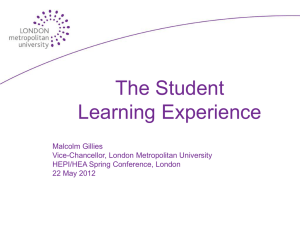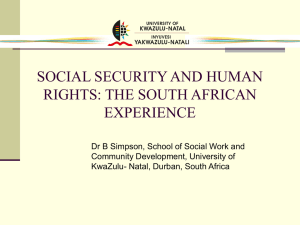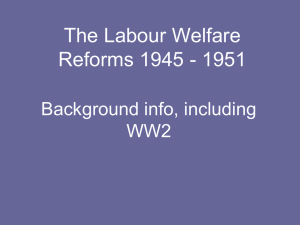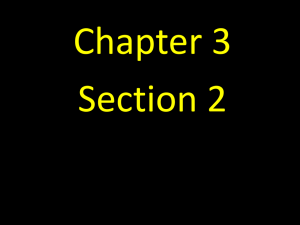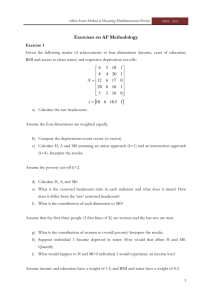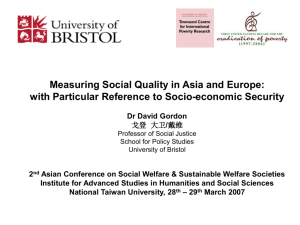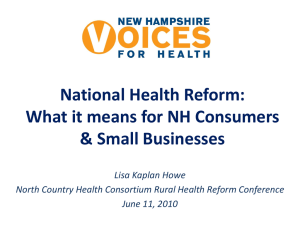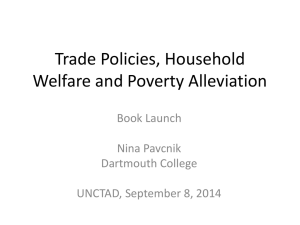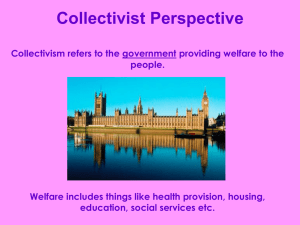Internet connectivity among people experiencing poverty and
advertisement
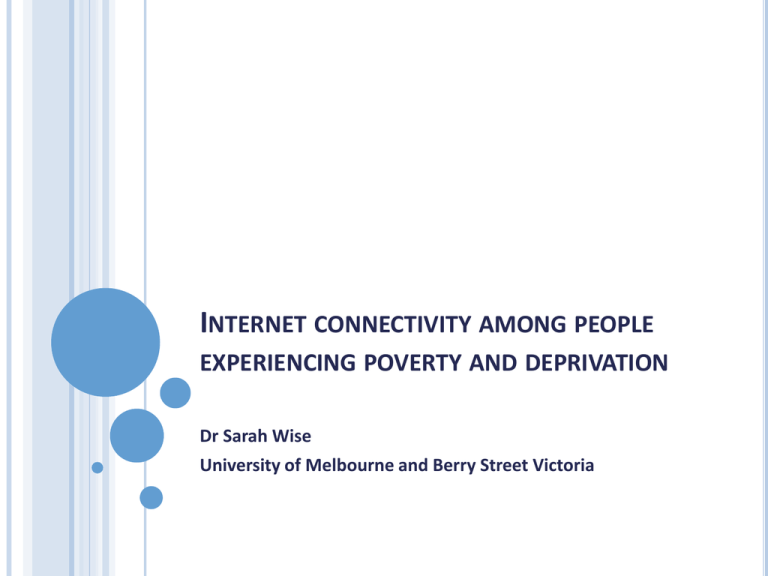
INTERNET CONNECTIVITY AMONG PEOPLE EXPERIENCING POVERTY AND DEPRIVATION Dr Sarah Wise University of Melbourne and Berry Street Victoria PRESENTATION AIM 7 points about deprivation of telecommunications among people experiencing poverty 1 strategy to build a more digitally inclusive society ANGLICARE VICTORIA’S 2013 HARDSHIP SURVEY 280 emergency relief and 45 financial counselling clients (N = 325) 24 Victorian service locations (14 metro, 10 non-metro) Deprivation index Items on telecommunications access and affordability 62.8% disability 7.7% homelessness 41.8% long-term (10+ years) unemployed 51.0% less than Year 12 education 55.0% living with dependent children under the age of 18 26.3% born in a nonEnglish speaking country. 46.6% male 10.8% above the working age (65 years or more) INTERNET CONNECTIVITY HAS POSITIVE BENEFITS Information and knowledge Skills building (e-learning) Services Social and political participation Employment Creative expression DIGITAL EXCLUSION CAN REINFORCE AND DEEPEN EXISTING SOCIAL INEQUALITIES 83.0 per cent of Australian households have access to the Internet (ABS 2014) 93.0 per cent of Australians with home Internet have broadband access (ABS 2014) 64.0 per cent of adults over the age of 18 (11.19 million people) use a smartphone (ACMA 2014) UNDERSTANDING WHO IS EXCLUDED AND WHY IS CRITICAL TO BRIDGING THE DIGITAL DIVIDE Skills and confidence in using the Internet Perceived benefits and interest/motivation Age Geographic location Affordability MAJORITY OF WELFARE SERVICE CLIENTS MISSED OUT ON HOME INTERNET AND SMART PHONE, BUT NOT MOBILE PHONE 100 90 80 70 Per cent 60 Welfare service clients 50 Australia 40 30 20 10 0 Home Internet Mobile phone Smart phone AGE AND PRESENCE OF DEPENDENT CHILDREN DIFFERENTIATED USERS AND NON-USERS OF HOME INTERNET AND SMARTPHONE Smartphone users significantly younger Home Internet users (almost) significantly older Home Internet users significantly more likely to have dependent children (<18 years) living in the home ≤$50 MONTHLY EXPENDITURE ON HOME INTERNET AND MOBILE PHONE AFFORDABLE FOR THOSE WHO HAD IT Home Internet 49.2% didn’t have it because they couldn’t afford it 68.0% (who didn’t bundle) spent $50 or less per month 63.4% (who didn’t bundle) felt the cost was ‘very’ or ‘moderately’ affordable Mobile phone 11.1% didn’t have it because they couldn’t afford it 82.3% spent $50 or less per month 61.7% felt the cost was ‘very’ or ‘moderately’ affordable HOME INTERNET GREATLY IMPROVED (OR WOULD IMPROVE) STANDARD OF LIVING Improvement (or perceived improvement) in standard of living 90 80 70 60 50 40 30 20 10 0 Welfare service client (had home Internet) Welfare service client (deprived of home Internet) Australia SCHEMES FOR AFFORDABLE SMARTPHONES COULD INCREASE INTERNET ACCESS FOR PEOPLE LIVING IN POVERTY Welfare service clients see the benefits of Internet access, but many can’t afford it Mobile phone is the dominant form of telecommunication Mobile networks, such as 4G, and Wi-Fi hotspots making mobile Internet more accessible Cost effective programs and special schemes for smartphone usage could be an effective strategy to increase Internet access for people living in poverty Up to $50 per month affordable for most FURTHER INFORMATION Australian Journal of Telecommunications and the Digital Economy 2(4), December 2014. sarah.wise@unimelb.edu.au

